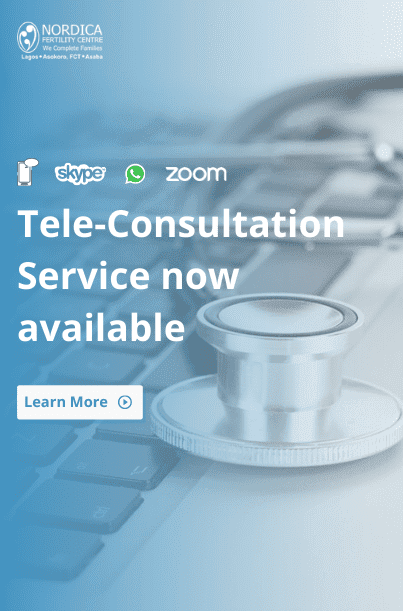How Does IVF Work?
How Does IVF Work?

The whole IVF process takes place within one menstrual cycle.For most women this is around 28 days, although some women may have longer or irregular periods. This needs to be something that you need to know beforehand so monitor this over the months preceding the IVF treatment. The first step involves getting a fertility assessment for both you and your husband. This includes looking at the condition of your fallopian tubes and making sure they’re in good working order. The gold standard for assessment of tubal condition is by laparoscopy (keyhole examination). Back up or alternative techniques include x-ray and ultrasound. Men also need to get tested. A sperm sample is analyzed for mobility and virility. This is to determine whether to go on with the conventional IVF or if there is a need for Intracytoplasmic Sperm Injection (ICSI), whereby the sperm is actually injected into the egg directly or IMSI. Less mobile or virile sperm will need a hand to fertilize the egg, thereby requiring ICSI or IMSI which will be discussed later in detail.
Step 1: SUPPRESSING THE NATURAL MONTHLY HORMONE CYCLE
As a first step of the IVF process you may be given a drug to suppress your natural cycle.Once the initial testing is done, you meet with the nurse who will give you follicle stimulating hormone (FSH) drugs.
Treatment is given either as a daily injection (which is normally self-administered unless you are not able to do this yourself) or a nasal spray. This continues for about two weeks leading up to ovulation. This all takes place right at the start of your menstrual cycle, just after a period. The purpose of FSH is to stimulate the release of more than, the regular, one egg.
The effect of the FSH on egg growth will be monitored constantly during this time with scheduled ultrasound examinations.
Step 2: CHECKING ON IVF PROCEDURE PROGRESS
Throughout the drug treatment, the clinic will monitor your progress. This is done by vaginal ultrasound scans. Sometimes the need to adjust the dose of FSH arises, depending on the response. If fewer than three mature follicles develop, the outcome of treatment is likely to be poor, the clinic will try to adjust the dose of FSH but if despite adjustments, the response remains poor, the treatment cycle may sometimes be cancelled and rescheduled. Conversely, some women over respond producing many follicles and are at risk of developing ovarian hyperstimulation syndrome (OHSS). Since the development of this complication can be potentially life-threatening, we sometimes have to cancel treatment cycles in such women in whom the onset of OHSS is imminent. If there is a good response, 34–38 hours before your eggs are due to be collected you have a hormone injection ( HCG-Human Chorionic Gonadotropin) to help your eggs mature. Oocytes (eggs) retrieval is done 34-38 hours after taking the HCG injection.
Step 3: EGG COLLECTION/OOCYTE PICK UP
In the IVF process eggs are usually collected by ultrasound guidance under sedation either general or local anaesthetic according to the case. This involves a needle being inserted into the scanning probe and into each ovary. The eggs are, in turn, collected through the needle. Cramping and a small amount of vaginal bleeding can occur after the procedure. The patient may need to stay in the hospital for one to two hours to recover after the procedure.
ANY COMPLICATIONS FOR THE OOCYTE PICK UP?
-Slight pain in the lower abdomen.
-Slight Spotting (to bleeding) from the vagina as a result of the needle used for the pickup.
Step 4: EGGS FERTILIZATION
The fluid collected from the follicles in special tubes is examined by the embryologist and the eggs are isolated. The semen sample is taken in the same day and the eggs are mixed with the partner’s or the donor’s sperm and cultured in the laboratory for 16–20 hours. They are then checked to see if any have fertilized using the conventional IVF. Those that have been fertilized (now called embryos) are grown in the laboratory incubator for another one – two days before being checked again.
Step 5: EMBRYO TRANSFER
The Embryos are transferred into the uterus after 2-5 days from the day of egg pick up (depending on the quality and quantity of the embryos) using a special embryo transfer catheter.
For women under the age of 40, one or two embryos can be transferred. If you are 40, or over, a maximum of three can be used. The number of embryos is restricted because of the risks associated with multiple births. The remaining embryos may be frozen for future IVF attempts, if they are suitable. The patient is given drugs to help support the implantation procedure. The embryo transfer procedure does not need a lengthy hospital stay(usually one hour). Residents of other countries can travel the next day if they so wish.
BEFORE TRANSFER
Some clinics may also offer blastocyst transfer(details will be discussed), where the fertilised eggs are left to mature for five to six days and then transferred.
PREGNANT OR NOT?
12-14 days after the embryo transfer a blood test is done to detect pregnancy. The ultrasound scan can detect it around 18days after embryo transfer. If it is positive, in some clinics a 2 week appointment is given for a pregnancy ultrasound scan to detect the foetal pole and heartbeat.



